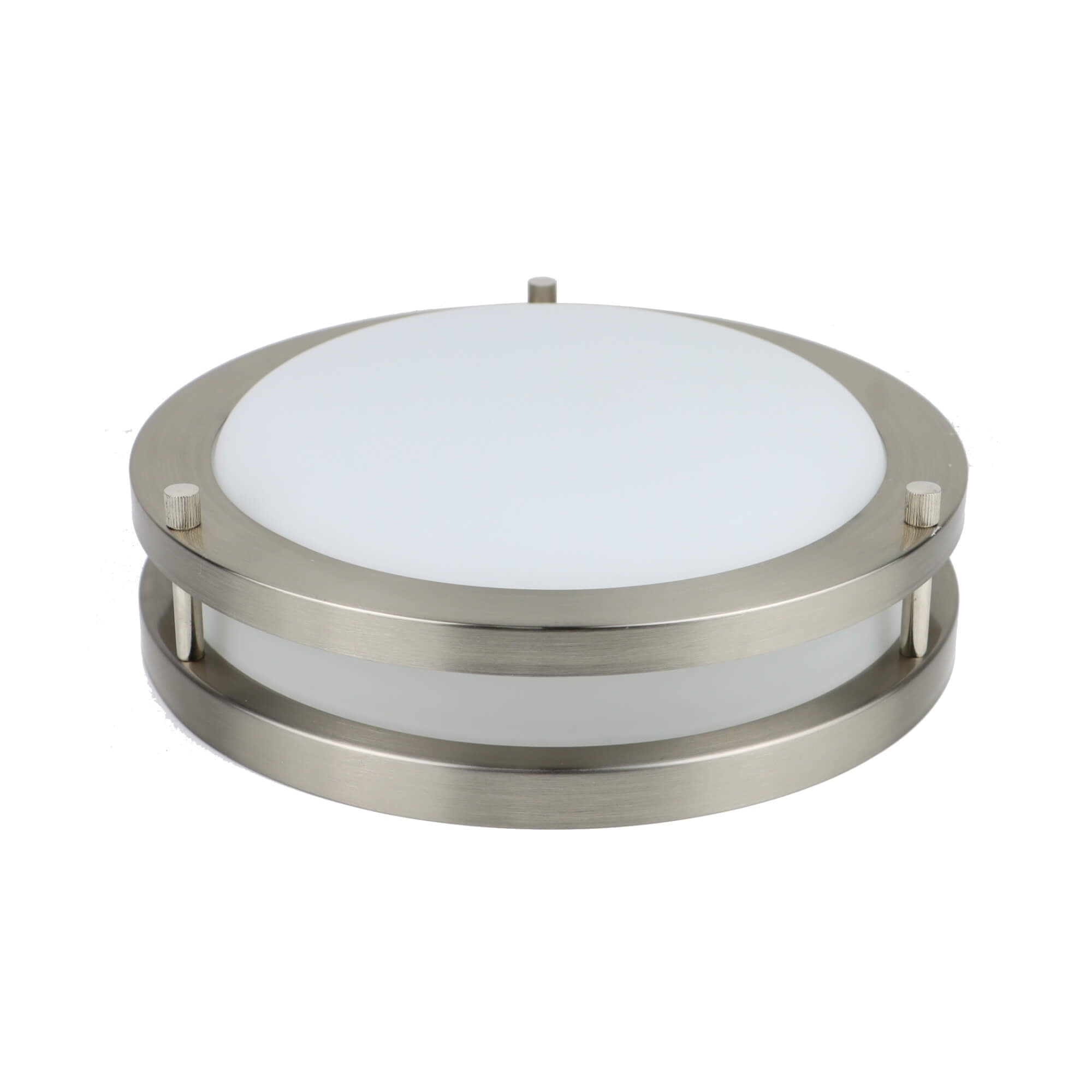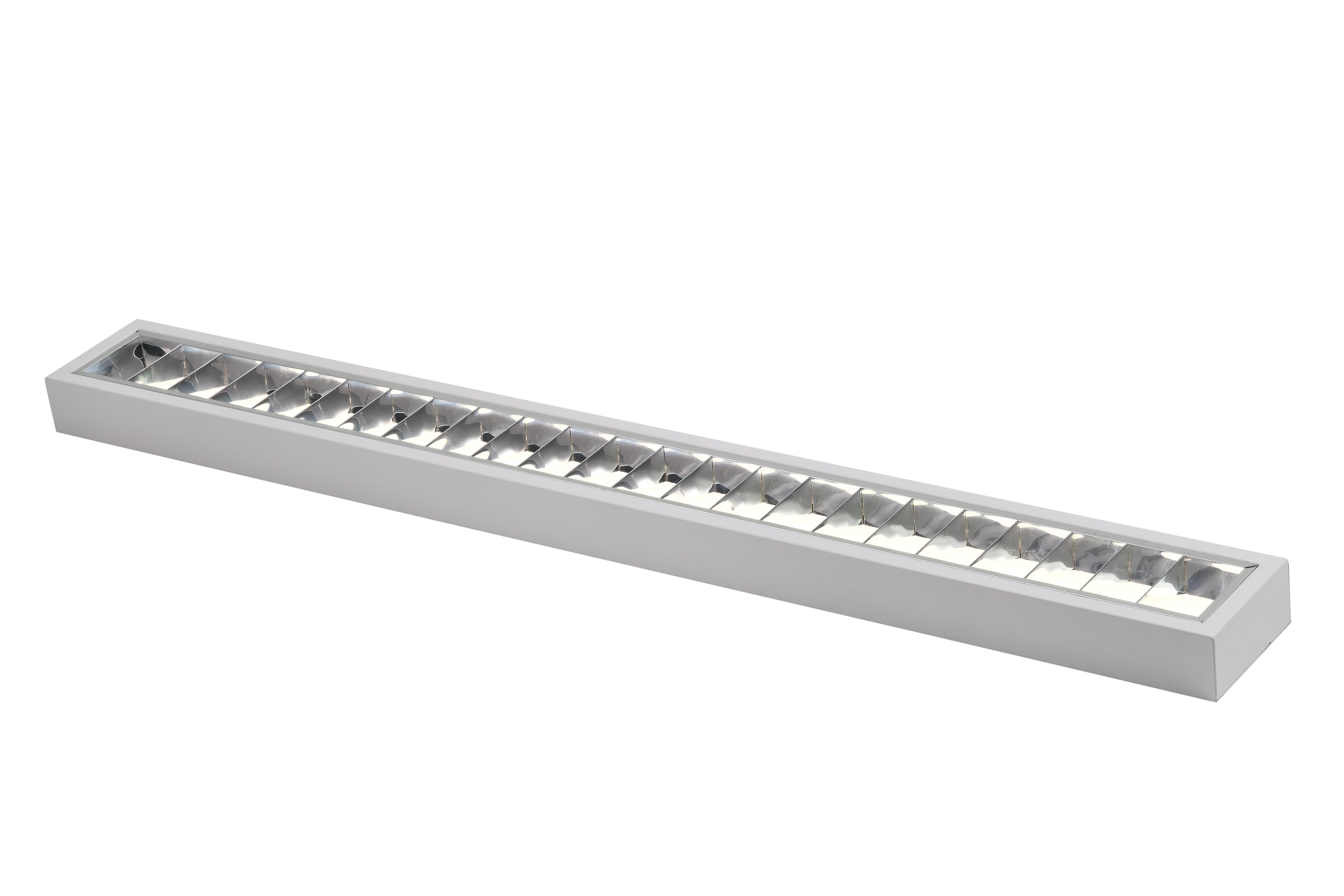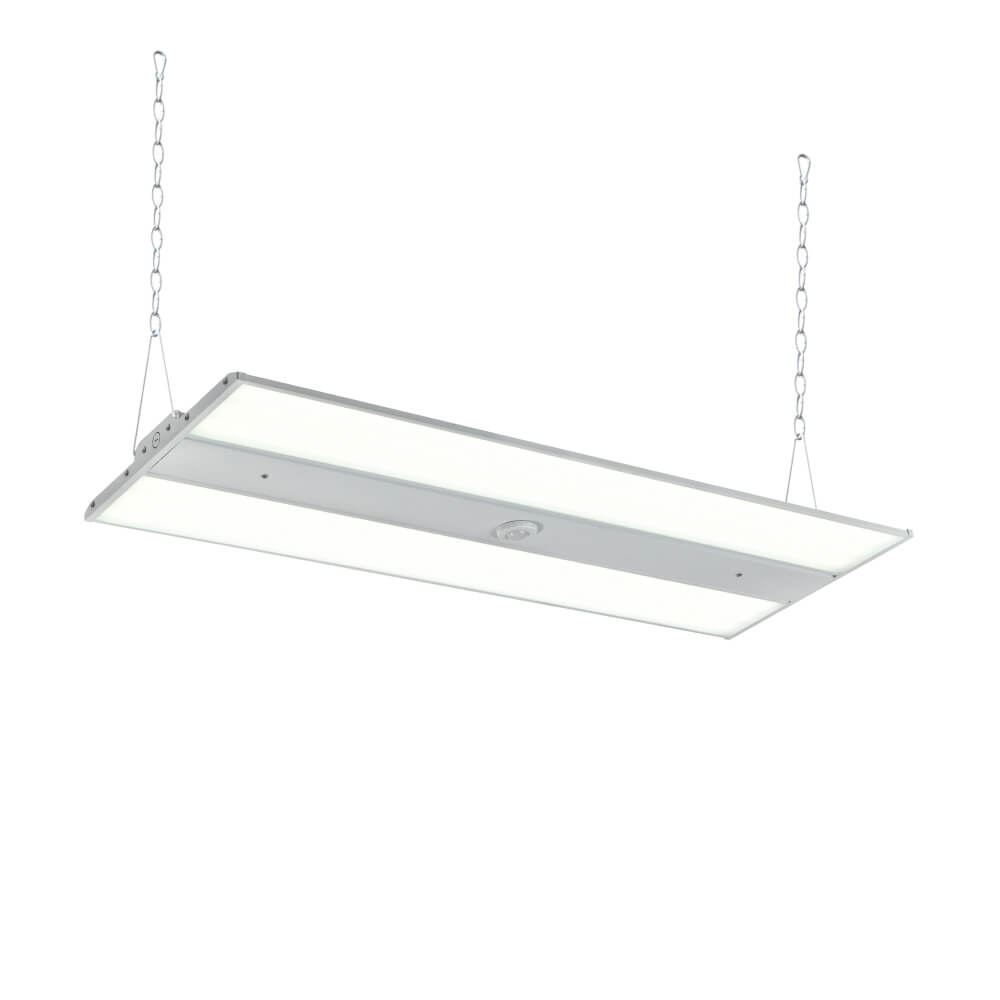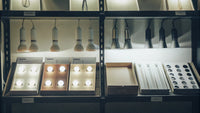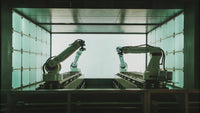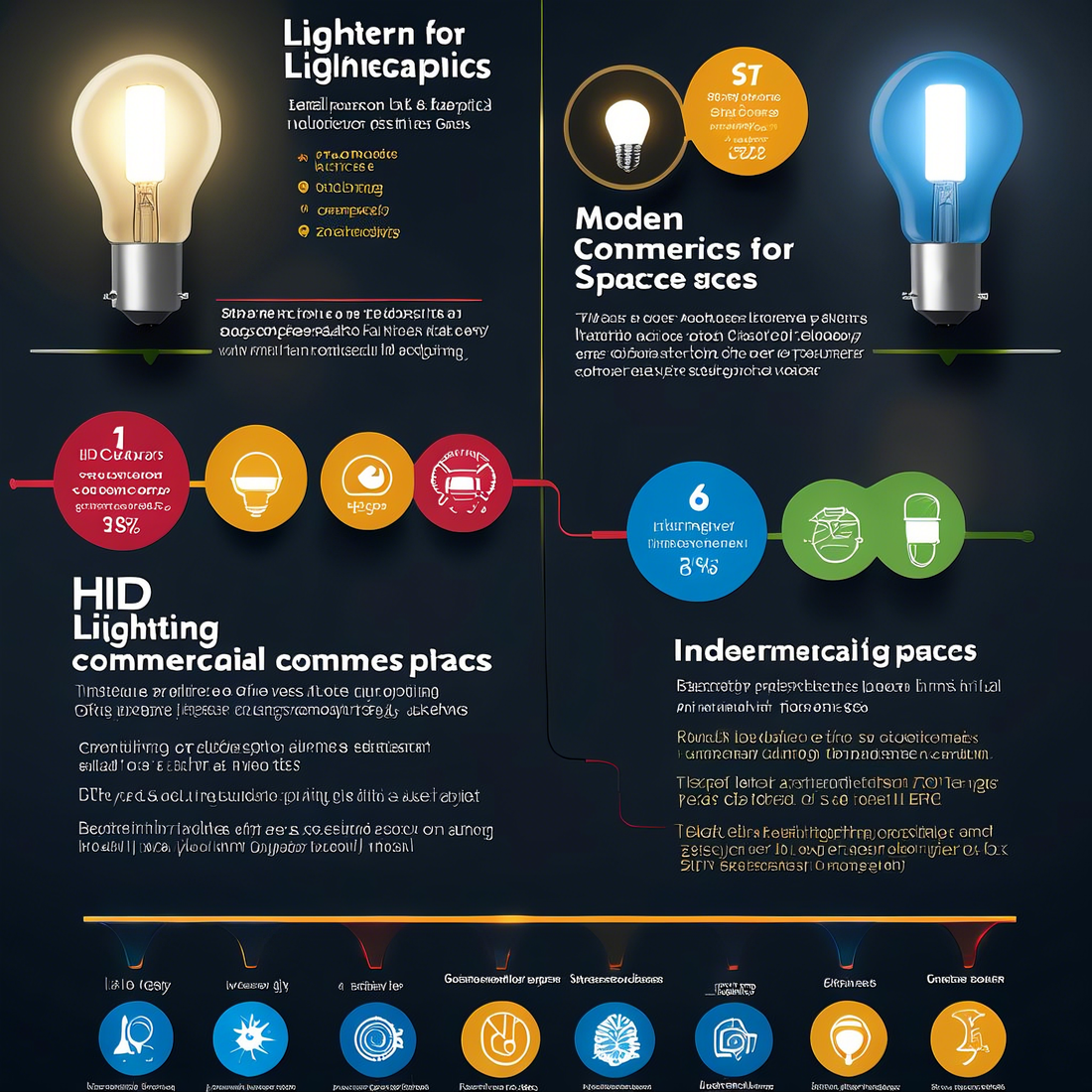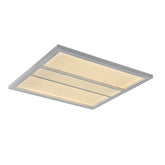LED vs Fluorescent vs HID for Commercial Spaces
When it comes to illuminating commercial spaces like warehouses, factories, office buildings, and retail stores, facility managers face tough choices about the best lighting solutions. Selecting between conventional legacy options or forward-looking technologies can impact everything from energy efficiency, operating costs, sustainability, and even worker productivity.
Navigating between outdated high-intensity discharge (HID) lighting, induction lights leveraging magnetic principles, traditional linear fluorescent lamps, and the newest light-emitting diode (LED) fixtures leaves many scratching their heads. They all seemingly promise efficient, smart lighting design, but which delivers on those visions?
This definitive guide sets out to inject clarity into the lighting decision process by contrasting HID, induction, fluorescent, and LED technologies across the most crucial factors. Whether it be upfront price points, the total cost of ownership with maintenance, light intensity, and quality, ease of control and dimming abilities, or sheer lumen output per watt, one option usually outperforms another for a given application.
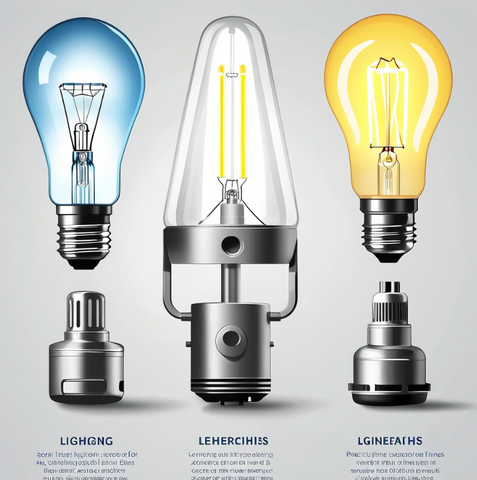
Overview of Main Lighting Options
When exploring the optimal light source for a commercial, industrial, or public space, the foremost options come down to four primary technologies – HID, induction, fluorescent, and LED. Before contrasting their relative benefits, understanding the underlying concepts proves critical.
HID Lighting
High-intensity discharge (HID) lighting is a category of electrical gas-discharge lamps that produce light by means of an electric arc between tungsten electrodes housed inside a translucent or transparent fused quartz or fused alumina arc tube. This tube is filled with both gas and metal salts. The gas facilitates the initial strike of the arc when a voltage is applied across the electrodes. Once the arc is started, it heats and evaporates the metal salts forming a plasma, which greatly increases the intensity of light produced by the arc and reduces its power consumption.
Key Types of HID Lamps:
- Mercury Vapor: Long lifespan, emits a bluish-green light, poor color rendition.
- Metal Halide: Better for color accuracy, preferred for retail and sports lighting.
- High-Pressure Sodium: High efficacy, long-lasting, used for street and industrial lighting.
- Low-Pressure Sodium: Highest efficacy, very limited color rendering, mainly for roadway lighting.
Considerations for Application:
- Mercury vapor lamps are less suited for areas where color representation is crucial.
- Metal halide lamps are chosen for their white light in venues needing accurate color visibility.
- High-pressure sodium lamps serve well in areas where efficiency and longevity outweigh color accuracy needs.
- Low-pressure sodium lamps are typically reserved for specific applications like road lighting.
Drawbacks across HID Lighting Variants:
- Bulb fragility can lead to increased maintenance costs.
- Periodic replacement is necessary as light output depreciates over time.
- Warm-up period required to achieve full brightness impacts flexibility in lighting control.
Induction Lighting
Induction lighting works by creating light with electromagnetism. A coil wrapped around the bulb energizes gases inside, which then produce light that’s made visible by a special coating. These bulbs are known for their toughness and long life — up to 100,000 hours. They’re great for hard-to-reach spots since they don’t need frequent replacing, although they’re not as bright as some other lights and have a higher initial cost.
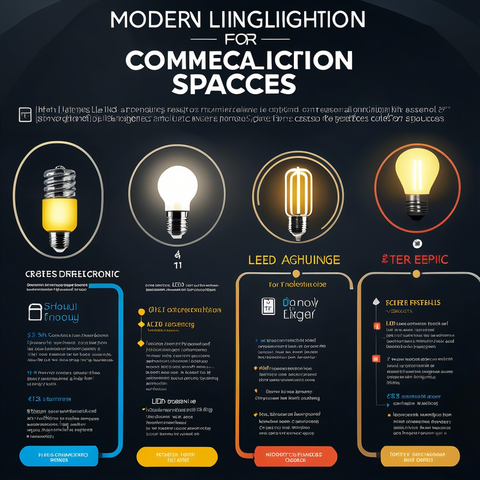
Advantages and Suitability:
- Longevity: Can last up to 100,000 hours, reducing replacement frequency.
- Durability: Rugged construction suitable for industrial environments.
- Instant-On: Achieves full brightness immediately, with no warm-up time needed.
Limitations:
- Brightness: Generally lower lumen output compared to HID lamps, which may not be suitable for all applications.
- Initial Expense: Higher upfront costs can deter widespread use, despite long-term savings.
Applications of Induction Lighting:
- Because of its durability and longevity, it’s well-suited for areas where lamp maintenance is difficult or disruptive.
- Its instant-on feature makes it advantageous for security lighting and in locations that require immediate illumination.
Fluorescent Lighting
Fluorescent lighting is a common type of illumination found in offices and schools, recognizable by its long, tube-shaped bulbs. While these lights have been the standard for many years, innovative LED classroom lighting is paving the road to academic success with brighter, more energy-efficient spaces. These LED solutions not only enhance the learning environment but also contribute to the well-being of both students and teachers. Discover the benefits and how to make the switch in our article 'LED Classroom Lighting: Start the road to academic success with brighter spaces!
Advantages:
- Energy Efficiency: Uses less energy than traditional incandescent bulbs.
- Cost-Effective: Cheaper to operate due to lower energy usage.
- Longer Lifespan: Lasts longer than standard incandescent lights.
- Cooler Operation: Emits less heat, making them cooler to the touch.
Disadvantages:
- Color Distortion: Can sometimes distort colors due to the quality of light.
- Mercury Content: Contains small amounts of mercury, requiring careful disposal.
- Dimming Difficulty: Not all fluorescent lamps are dimmable, and those that are may require special equipment.
- Delayed Start: Older types can be slow to start, especially in cold conditions.
Applications:
- Fluorescent lighting is often used in commercial buildings, like office spaces, due to its cost-efficiency and long-lasting performance.
- It’s also common in educational settings such as classrooms for its bright, consistent light.
- Industrial spaces may use high-output fluorescent lighting in areas where lots of light over a wide area is required for extended periods.
- Because they emit less heat, they’re a good choice for areas where temperature control is important, like in laboratories and food storage spaces.
LED Lighting
LED (Light Emitting Diode) lighting is a modern and highly efficient form of illumination. An LED light produces light when an electrical current passes through a microchip, which illuminates the tiny light sources we call LEDs and results in visible light. This process is highly efficient, as LEDs emit very little heat compared to traditional incandescent and fluorescent lights.To understand more about how and why LEDs maintain cooler temperatures, take a look at our detailed guide on 'Do LED Lights Get Hot?
Advantages:
- Energy Efficiency: LEDs use up to 90% less energy than incandescent bulbs.
- Longevity: They can last 25 times longer than traditional bulbs.
- Durability: LEDs are more resistant to breakage as they don’t have filaments or glass enclosures.
- Instant Lighting: They light up immediately without needing time to warm up.
- Low Heat Output: LEDs emit very little heat, making them safer to handle.
- Eco-Friendly: No toxic elements like mercury are used in their design.
Disadvantages:
- Initial Cost: Higher upfront cost, though this is offset by long-term savings on energy and replacement.In extreme temperatures, specialized LED fixtures for the environment are needed, and Halcon Lighting's Vapor Tight LED Light is capable of operating in temperatures as low as -4°F, and their LED High Bay Lights are capable of operating indoors in temperatures as high as 122°F.
- Temperature Sensitivity: Performance can be affected by extreme temperatures.
- Directional Light: Basic LEDs emit light in a specific direction, which may require additional diffusers to spread light in some fixtures.
Applications:
- Due to their energy efficiency and longevity, LEDs are ideal for residential and commercial settings where reducing energy consumption is a priority.
- They’re excellent for task lighting due to their directional nature, making them suitable for desk lamps, reading lights, and under-cabinet lighting in kitchens.
- Outdoor lighting benefits from LEDs’ durability, including streetlights, parking garage lighting, and landscape lighting.
- Their low heat emission makes LEDs appropriate for sensitive areas like art galleries and data centers, where temperature control is crucial.
Side-by-Side Comparisons of Performance
Understanding how lighting options stack up across crucial metrics helps match the optimal technology to application needs.
Brightness/Intensity of Light Output
When judging lighting brightness, the standard measure involves lumens representing total light output. LED lighting outputs over 120 lumens per watt, outperforming fluorescents at 70-100 lumens per watt and HID or induction lamps at just 40-90 lumens per watt. Where intensity over large areas matters most, HID and LED excel by focusing light into high candela models.
Energy Efficiency
Closely related to brightness, energy efficiency computes the light produced per watt of electricity consumed. Again LED technology leveraging small, durable electrical junctions converts over 40% of energy to light, achieving up to a 200 lumen/watt efficiency. Well-designed fluorescent lighting can reach 100 lumen/watt efficiency. However, legacy HID/induction models lag at around 30-60 lumen/watts as heat waste and ballast losses mount.
Lifespan and Durability
Facility managers cringe at constant lighting maintenance. When assessing lifespan to failure, LED technology offers up to 100,000 hours of nearly maintenance-free operation. Induction lighting comes close at 60-80,000 hours between changeouts. Fluorescents average 30-50,000 hours of life if electronic ballasts are integrated. But standard metal halide HID lighting endures just 10-15,000 hours before burning out.
Ease/Speed of Installation
While LED and fluorescents allow for plug-and-play installations, HID and induction rely on specialized electrical fittings, lamp orientation, and ballast matching to ensure proper startup and operation. Retrofitting existing fixtures to LED has become simplified with modular panels and arrays easing integration.
Color Rendering Ability
The lighting industry depends on color rendering index (CRI) values to assess how truly and accurately different light sources showcase colors on the objects they illuminate. LED and fluorescent options now offer specialized lamps with 90+ CRI for perfect color rendering. HID and induction sources hover between 65-85 CRI at best.
Dimming Capability
As smart lighting and occupancy controls proliferate in the Internet of Things age, the ability to dim lighting levels on demand can greatly impact energy savings. Both fluorescents and LED sources allow seamless dimming across a wide range with advanced electronic ballasts and drivers. Legacy HID and induction sources remain notoriously difficult to effectively dim.
Upfront and Maintenance Costs
Smart facility managers crunch the numbers on both the initial investment required for purchasing and installing a lighting system, along the ongoing expenses to operate and maintain performance over years of use.
Initial Fixture and Lamp Purchase Costs:
In the past, hesitation around LED adoption centered on substantially higher upfront costs, sometimes 3 to 4 times the expense of fluorescent or HID fixtures. But with manufacturing scales and plummeting prices, LED fixtures now carry modest cost premiums, often dropping below induction and legacy options on an apples-to-apples lumen comparison.
Frequency of Bulb Replacements:
While LED arrays and chips last up to 100,000 hours, and induction lamps make it to 60,000 hours before requiring replacement, fluorescent tubes peter out every 25,000-40,000 hours. HID bulbs show inefficiencies even faster, burning out and needing swap-outs every 10,000-20,000 hours of use. This can add up to major labor expenses over decades.
Labor Costs for Installations and Bulb Changes:
Specialized HID and induction options often require hiring certified electrical contractors to handle tricky line-voltage connections, alignments, and hazardous material handling during fixture or bulb changes. Some LED and fluorescent options simplify plug-and-play self-installation and component swaps without major tools. This cuts man hours substantially.
Energy Consumption Over Time:
Even with higher upfront pricing, high-efficiency LED lighting recoups costs in the range of months or a few short years when accounting for massive energy savings over incandescent, HID, or less optimized fluorescent lighting. LED cuts consumption and utility bills by 40-60% over former options, saving thousands over lifetime usage. Both induction and fluorescents trail slightly behind but still outperform standard HID fixtures.
Environmental Impact Factors
Seeking lighting options with improved sustainability profiles reduces waste, pollution, and resource consumption through responsible designs.
Recyclability and Responsible Disposal:
Spent LED components require responsible recycling and waste management like other electronics at end-of-life. Fluorescent lamps similarly need special handling during disposal to prevent mercury release from broken tubes. However, both technologies avoid heavy metals like lead. On the other hand, outdated HID and induction lighting contain problematic mercury and lead exposure risks demanding complex processing. Many regions ban outright dumping.
Energy Use Reduction:
The greenest kilowatt of energy remains the one never used. With unrivaled efficacy, LED lighting minimizes electricity demands, indirectly curbing fossil fuel energy use and affiliated pollution from the power grid. Well-designed fluorescents trail closely behind LED in efficiency, while induction and HID continue using 2 to 6 times excess energy respectively for the same brightness.
Safer Materials and Less Waste:
Unlike fragile glass tubes, LED fixtures mainly contain reusable metals, silicon, and recoverable epoxy resins. Fluorescents utilize worrying mercury until recent innovations. And HID/induction options not only integrate environmentally damaging mercury in lamps but rely on lead-based soldering. LED and fluorescents generally emit less heat and UV rays as well, improving workplace safety. Waste gets cut using durable LEDs/fluorescents lasting years instead of months with fewer changeouts.
Ideal Applications for Each Technology
Matching lighting solutions to usage cases and environments ensures stellar performance.
Large High-Bay and Warehouses: HID & Induction
With towering vertically-oriented spaces like large warehouses, aircraft hangars, gymnasiums, and big box retail circulating tall shelving racks, intense top-down illumination becomes paramount. Both legacy HID and induction lighting focus intense beams ideal for reaching 20-40 foot ceilings and penetrating shelving rows with high-bay configurations. Heat resilience suits non-climate-controlled buildings as well. Cost-effectiveness seals the deal.
Color-Critical Commercial Spaces: Fluorescent & LED
Art galleries, high-end retail boutiques, restaurants, and office spaces demand perfect color rendering and ambiance control. Their LED and fluorescent lighting shines by offering fixtures with 90+ color rendering indexes that showcase merchandise and food in lifelike warmth and quality. Meanwhile, smooth dimming across a broad range sets any desired mood. The technologies suit lower 10-20 foot ceilings with plenty of flexibility in shapes like recessed or track lighting.
Outdoor Public Spaces and Streets: HID & LED
Public spaces require ruggedness and intense light beams to effectively illuminate parks, parking lots, walking paths, and roadways. Both HID, with a long legacy outdoor, and newer LED designs that resist temperature swings and water ingress fill this role. Increasingly, the directional control, networked smarts, and energy savings of LED make it the runaway favorite over aging HID installations. Maintenance savings are substantial as well with LEDs lasting years instead of months.
Offices and Controlled Environments: Fluorescent & LED
The diffuse yet ample illumination of fluorescent lighting has lit offices for decades. But now LED panels and fixtures offer similar uniform coverage with unbeatable benefits stemming from solid-state technology. No glass tubes mean enhanced resilience, integrated sensors support intelligent automation, efficiency curbs budgets by 40-60%, and employees benefit from flicker-free illumination
enhancing comfort and productivity. Still, in cost-sensitive builds, fluorescents get the job done.
Closing Guidance on Selecting Optimal Light Source
Selecting the right lighting technology for a commercial, industrial, or public space is a critical decision that hinges on a deep understanding of each option’s strengths and limitations. Here’s a focused conclusion to assist in making an informed choice:
Key Considerations for Lighting Selection:
- Energy Efficiency & Cost: LEDs lead in energy efficiency, offering substantial long-term cost savings despite a higher initial investment. Fluorescents remain a budget-friendly alternative with moderate efficiency.
- Lifespan & Maintenance: LEDs offer unparalleled longevity with minimal maintenance needs, followed by induction lights. HID and fluorescent technologies typically require more frequent replacements and associated labor costs.
- Light Quality & Applications:
- HID excels in high-intensity applications like street lighting and industrial settings.
- Induction is preferred for areas where lamp access is challenging due to its long lifespan.
- Fluorescent lights are a staple in offices and schools for general lighting purposes.
- LEDs are versatile, suitable for a wide range of settings from precision task lighting to broad outdoor illumination.
- Environmental Impact: LEDs have the least environmental impact over their lifecycle, generating less waste and using safer materials. Both LEDs and fluorescents contain no heavy metals, unlike some HID options.
- Advancements & Control: LED technology is at the forefront of smart lighting solutions, offering advanced controls, dimming capabilities, and integration with building management systems.
Strategic Application Recommendations:
- For Bulk and Scale (Warehouses, Large Stores): Consider HID for cost-effectiveness and induction lighting when longevity and reduced maintenance are priorities.
- For Color-Critical Spaces (Retail, Art Galleries): LEDs and fluorescents with high CRI values are optimal, ensuring accurate color representation.
- For Outdoor and Public Areas: LEDs are increasingly favored for their durability, energy savings, and advanced control systems, though HIDs are still common in existing infrastructure.
- For Standard Office Environments: While fluorescents have been traditional, LEDs are rapidly becoming the standard due to their energy efficiency, lower heat output, and improved lighting quality.
In the final analysis, LEDs stand as a beacon of innovation in lighting technology, casting an increasingly favorable glow on their prospects in commercial, industrial, and public spaces. Their exceptional energy efficiency and cost-effectiveness are matched only by their versatility and commitment to environmental stewardship. As such, selecting LED lighting isn’t just choosing a source of illumination; it’s a clear statement in support of a brighter, greener, and more sustainable future.
